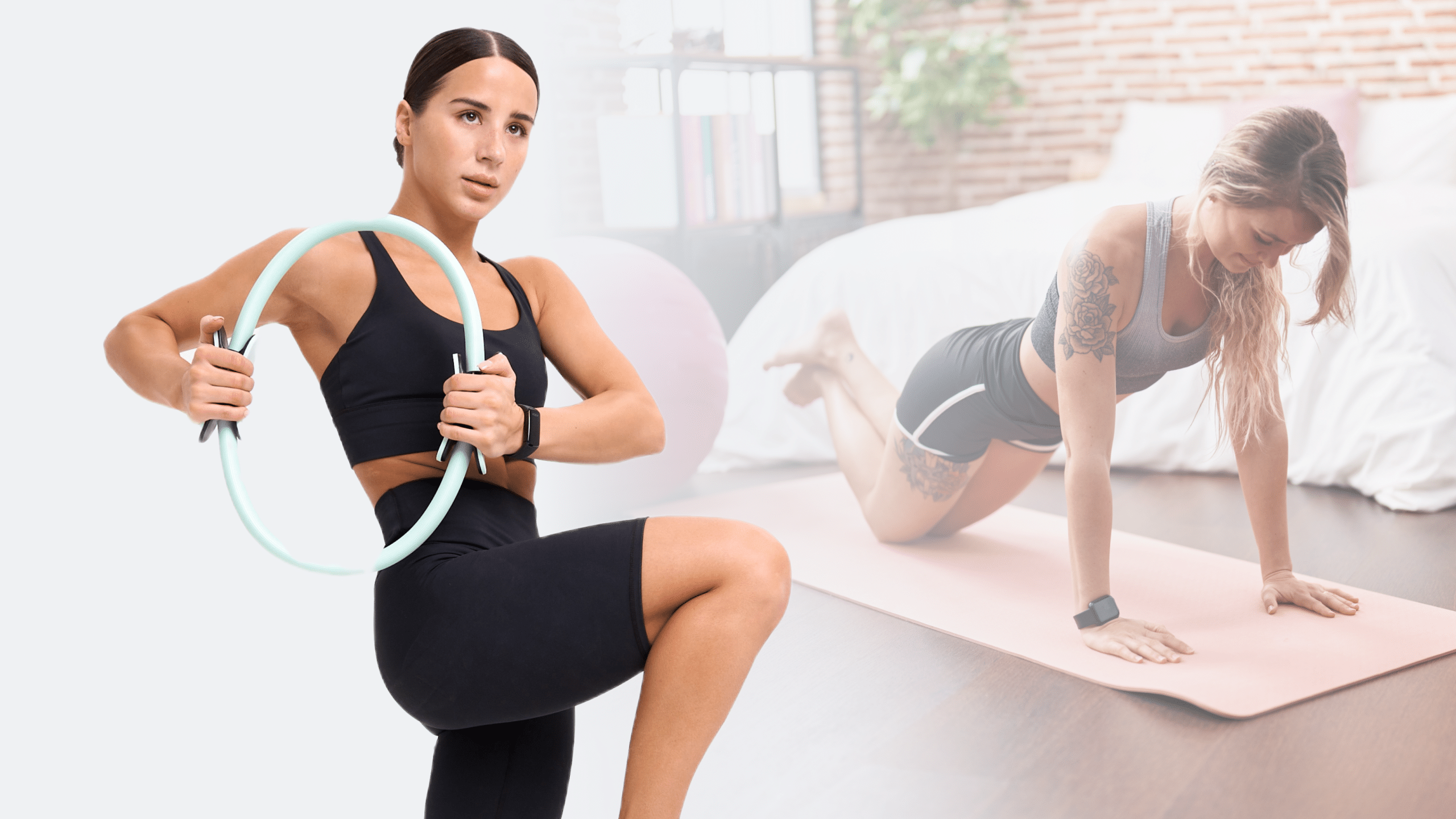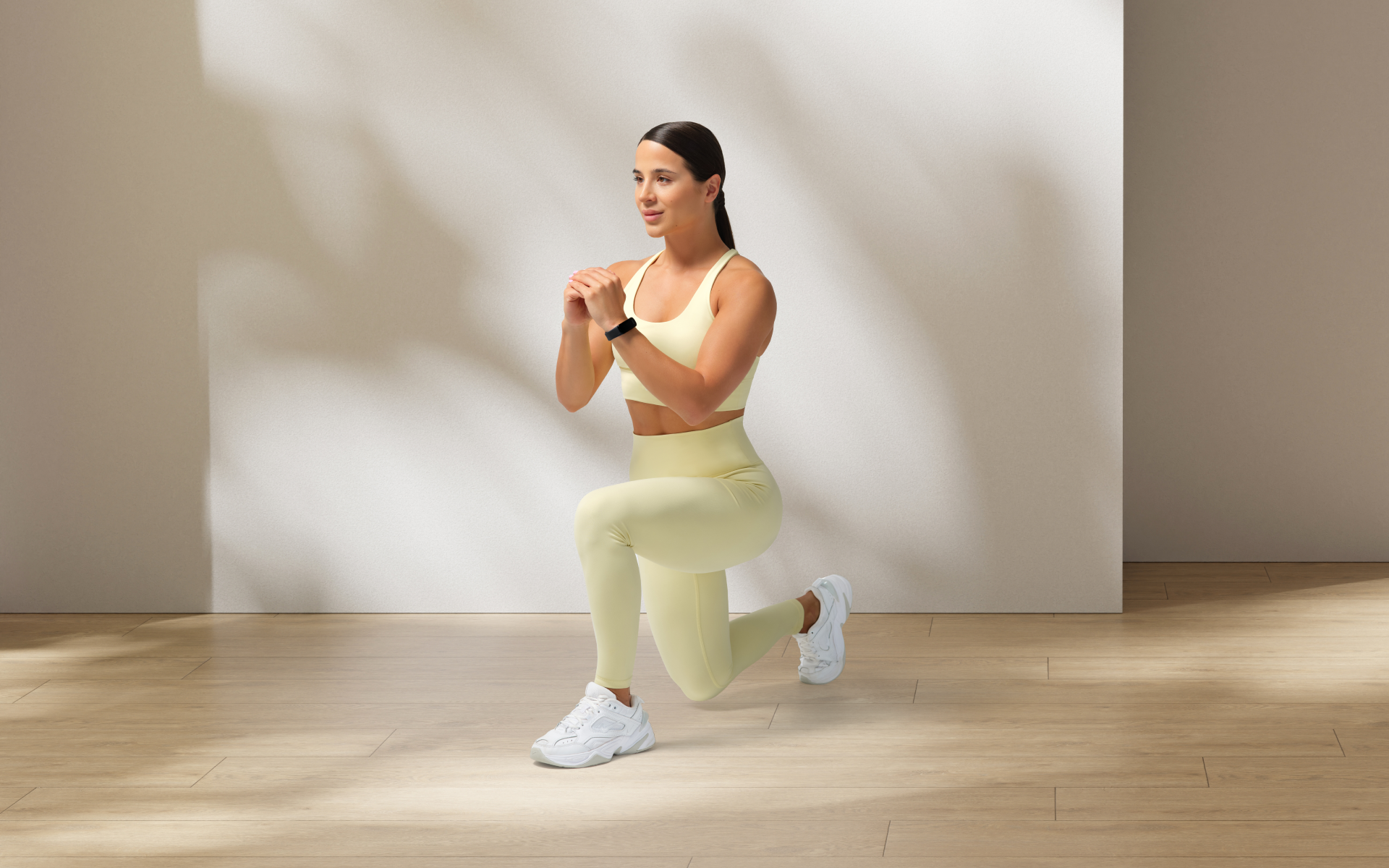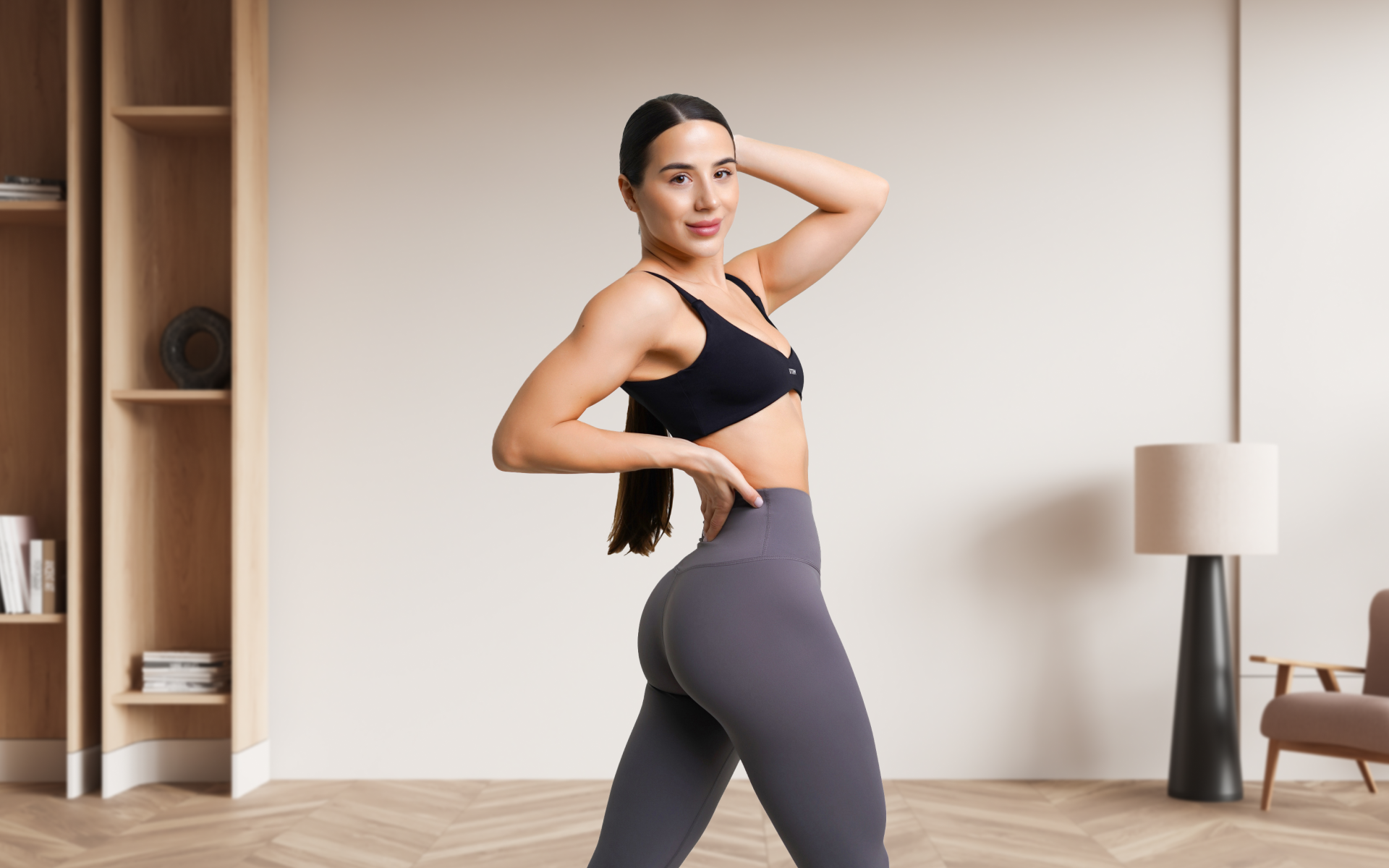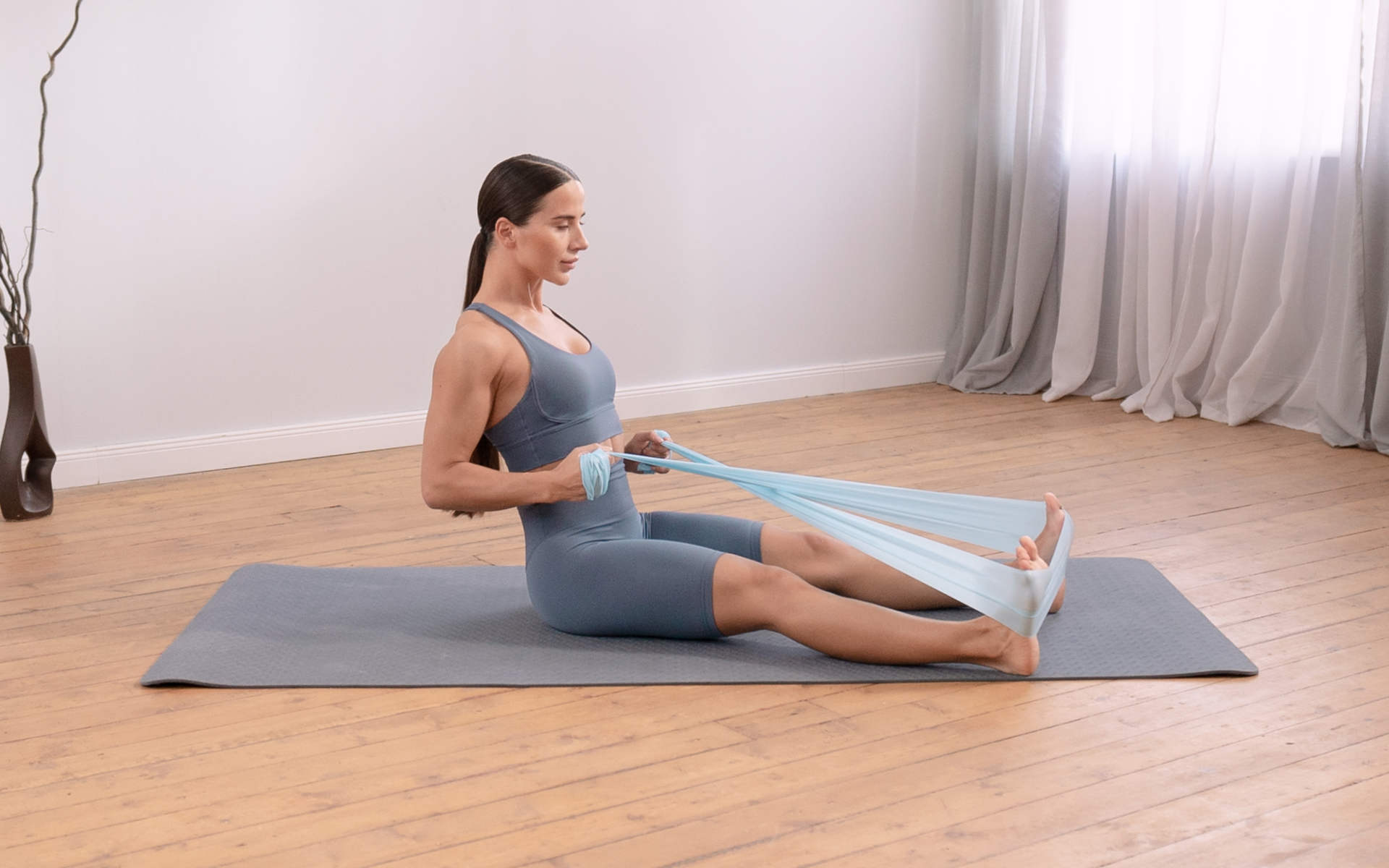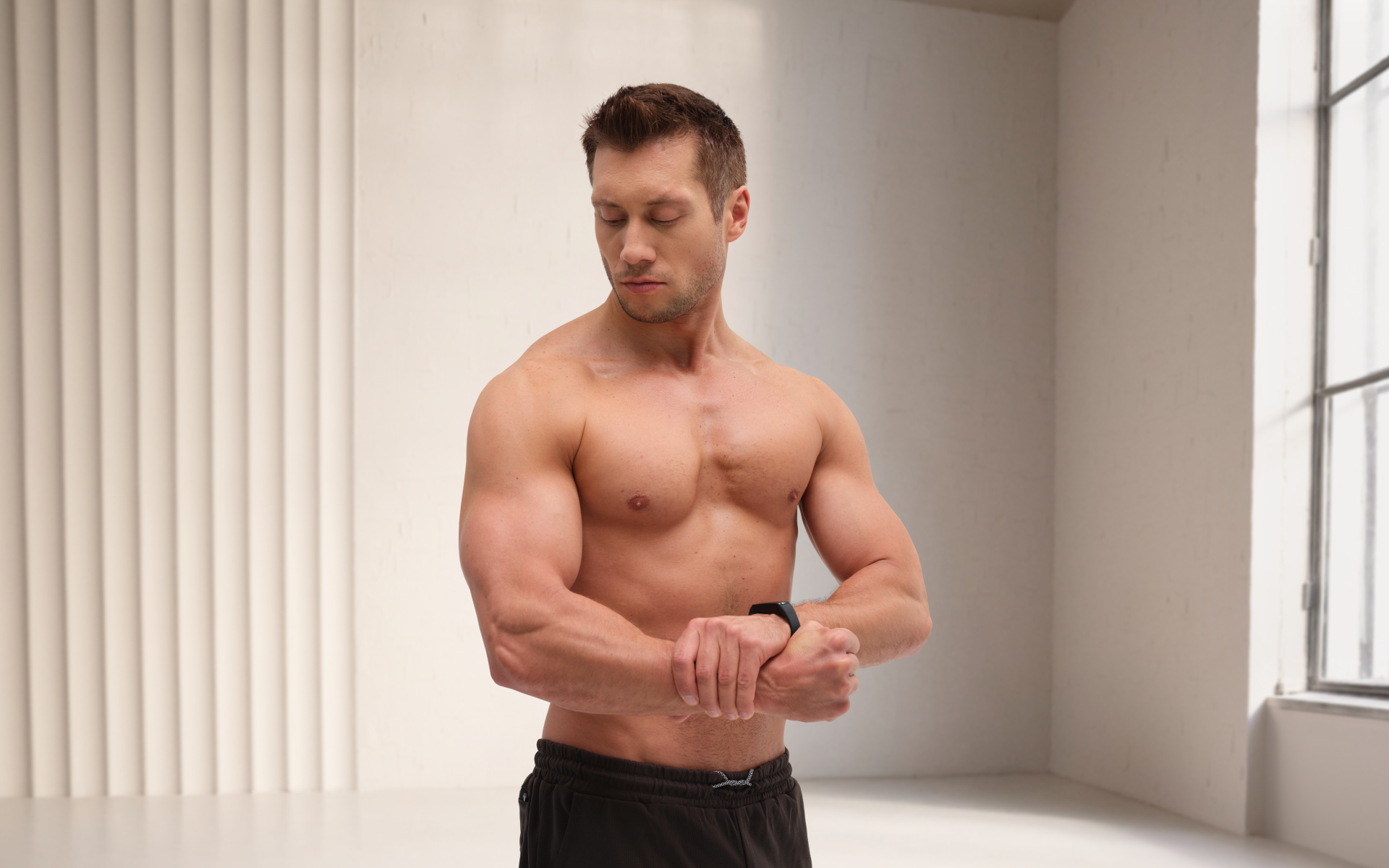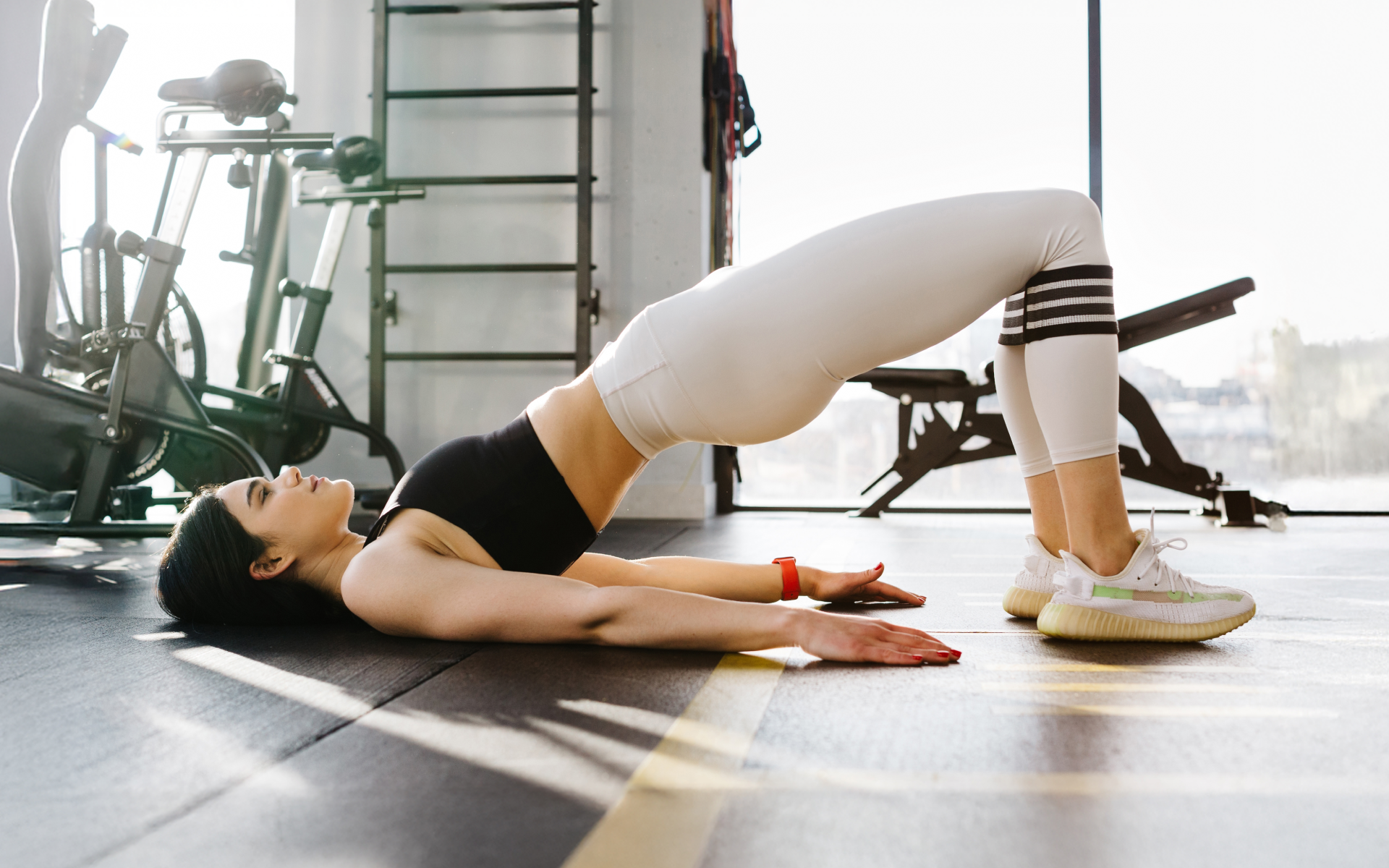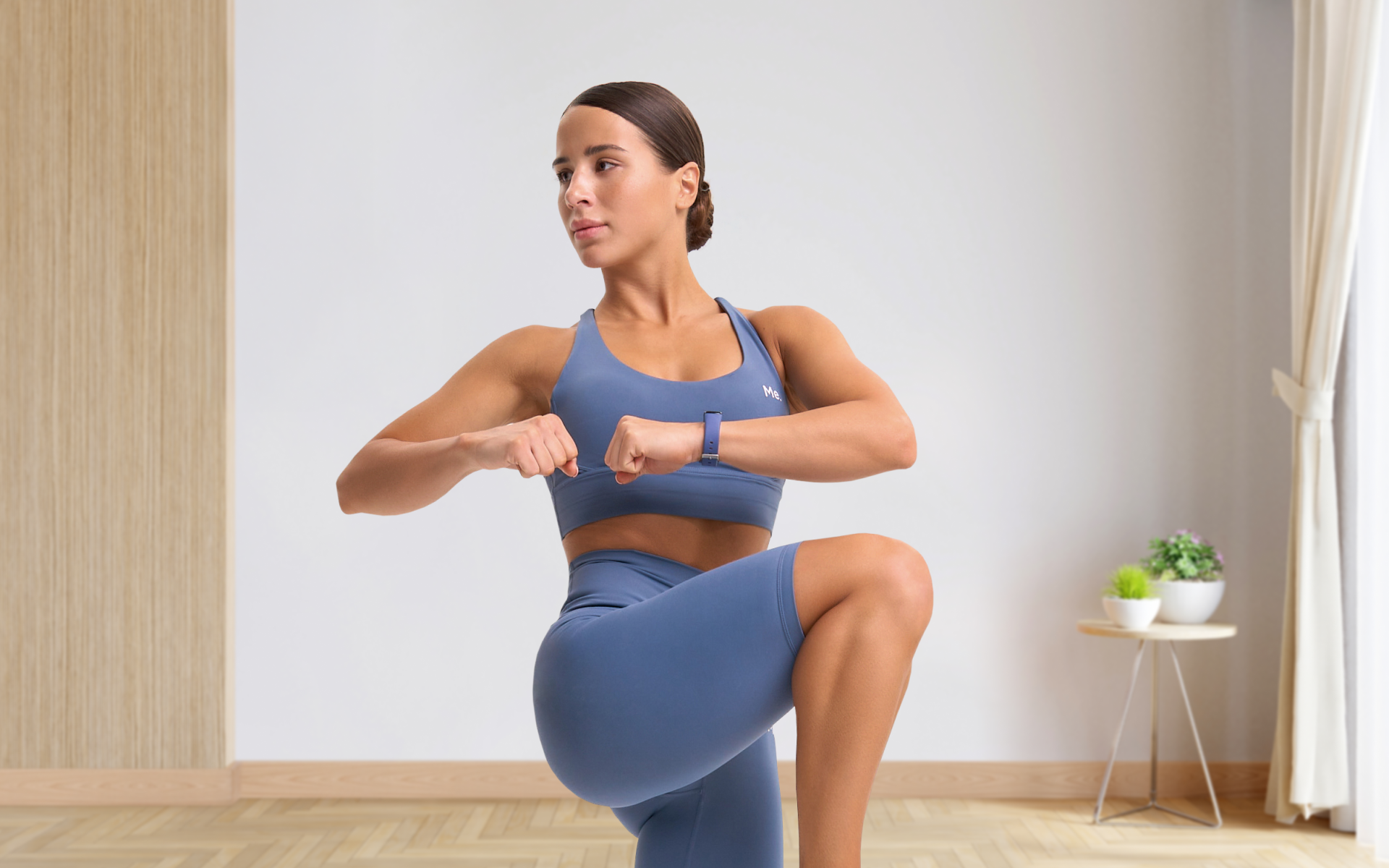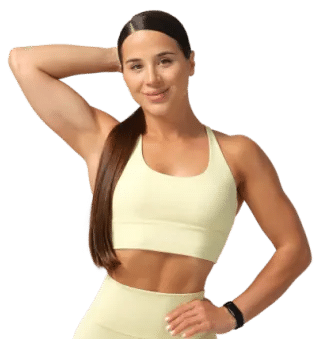The Calisthenics body type, defined by muscular and functional strength without excess bulk, is every bit as desirable as it is attainable. So, how do you start? Should you just jump into doing push-ups and hope for the best?
We’ve compiled an essential guide that will take you through the why, how, and what of beginning your calisthenics journey.
Aimed specifically at women who are new to this form of exercise, our guide breaks down the myths, lays out a starter plan, and provides you with tips to keep you motivated. Let’s get into it.
Who Is Calisthenics Best For?
Calisthenics is highly inclusive, catering to various objectives and fitness levels, from novices seeking general fitness improvements to advanced practitioners aiming for specific skill development.
Here are several groups of people for whom calisthenics is particularly beneficial:
- Beginners in Fitness: For those new to exercising, calisthenics provides a gentle introduction. It teaches fundamental movement patterns and builds a base level of strength and endurance.
- People Seeking Improved Body Control: Calisthenics involves movements that enhance coordination, agility, and balance, making it ideal for individuals who want to improve their body control and movement efficiency.
- Athletes: Athletes can benefit from the functional strength, mobility, and flexibility developed through calisthenics exercises, which can translate into improved performance in various sports.
- Individuals with Limited Access to Equipment: Since calisthenics primarily relies on bodyweight exercises, it’s perfect for people who don’t have access to a gym or prefer to work out at home or outdoors.
- Those Focused on Muscle Endurance: Calisthenics routines often involve higher repetitions and sets, which are excellent for building muscle endurance and stamina.
- People Looking for a Low-Cost Way to Exercise: Without the need for expensive equipment or gym memberships, calisthenics is an economical way to keep fit.
- Individuals Interested in Bodyweight Skills: For those intrigued by the ability to perform advanced bodyweight exercises, such as handstands, pull-ups, and muscle-ups, calisthenics offers a progression path towards mastering these skills.
- Weight Loss Seekers: Calisthenics can also be effective for weight loss when combined with eating in a calorie deficit, as it combines strength training with cardiovascular effort, especially when performed in circuits or with minimal rest between exercises.
- Anyone Looking for a Flexible Workout Routine: Calisthenics can be done anywhere, anytime, making it highly convenient for people with busy schedules or those who travel frequently.
Dropping pounds by the dozens without putting yourself through the wringer is everyone’s weight loss pipe dream. But what if we told you that the BetterMe app can make that happen? Keep yourself in prime shape with our fat-blasting workouts, delicious budget-sparing recipes, and body-transforming challenges with our app!
Will Calisthenics Make Me Bulky?
No. Calisthenics won’t make you bulky. Women lack the testosterone levels needed to build significant amounts of muscle mass naturally. Instead, they may see a decrease in body fat percentage and an increase in lean muscle mass over time.
In addition, calisthenics exercises tend to be more focused on functional strength and body control (19). That said, while you may see an increase in muscle size, it will likely not be to the extent of bodybuilding.
Beyond the female calisthenics transformation, there are many benefits to be had by women who incorporate calisthenics into their fitness routine (14):
1.You’ll Become More Flexible
One of the first benefits you’ll likely notice from practicing calisthenics is enhanced flexibility (21). Unlike machines that limit your range of motion, calisthenics involves exercises that encourage your body to stretch and move in ways it might not be used to.
Over time, this can lead to significantly improved flexibility, reducing your risk of injuries and making daily activities easier (17).
2. Your Core Strength Will Improve
Calisthenics exercises often engage the core muscles, including the abdominals, obliques, and lower back muscles, in a dynamic and integrated way. This is not just about getting a toned belly; a strong core improves posture, reduces lower back pain, and enhances performance in virtually every physical activity (4).
Read more: The Simplest Lower Back Calisthenics Guide for Beginners
3. Your Bone Density Will Increase Over Time
Weight-bearing exercises, which include most calisthenics movements, can help increase bone density. This is particularly important for women, who are at a higher risk for osteoporosis later in life (13).
Regular exercise such as calisthenics training can contribute to healthier, stronger bones, helping to prevent bone loss with age (6).
4. Your Mental Health Will Improve
Exercise, calisthenics included, is a powerful mood booster. It increases the production of endorphins, which are natural stress fighters (15).
Regular calisthenics workouts can reduce symptoms of depression and anxiety, improve sleep, and boost overall mood (15). Plus, the focus and concentration required for some calisthenics exercises can also provide a mental break from daily stressors.
5. Weight Management Will Become Easier
Calisthenics can be an effective way to manage weight, when combined with a balanced diet. Exercise helps burn calories, helping to create a calorie deficit which is necessary for weight loss (9).
Additionally, as you build lean muscle mass, that mass will require more energy to sustain itself, increasing your resting metabolic rate, meaning you burn more calories, even when you’re not working out (10).
6. Your Muscular Endurance Will Improve
Over time, female calisthenics workout leads to increased muscular endurance (21). This means you’ll be able to perform daily tasks, like carrying groceries or climbing stairs with less fatigue.
Enhanced endurance also translates to better performance in other sports and activities, as your muscles will be able to withstand prolonged periods of exertion more effectively (2).
In a previous blog; Calisthenics for Women, we discussed the many benefits of calisthenics for women and why it’s such a great exercise choice.
How to Get Started with Calisthenics as a Female
If you’re interested in incorporating calisthenics into your fitness routine, here are some tips to get started:
Understand Your Body
Recognize your baseline fitness level. Before you start, assess your current strength, flexibility, and endurance. This will help you tailor your routine to your starting point, ensuring gradual and consistent progress.
Tailor Your Foundation
Modify foundational exercises to your current ability. If standard push-ups are challenging, begin with knee push-ups or wall push-ups. For pull-ups, start with negative pull-ups or use resistance bands for assistance.
Structuring Your Routine
Implement a balanced workout split. Dedicate different days to upper body, lower body, core, and full-body flexibility. This ensures comprehensive development and allows muscle groups adequate recovery time.
Want to build an attention-grabbing bubble butt, blast away fat that’s stored in all the wrong places, spring-clean your diet, turn back the clock on your skin, skyrocket your self-confidence and shatter your insecurities? Check out the BetterMe app and set this plan in motion!
Skill Progressions
Focus on skill progressions. Break down complex skills into smaller, manageable progressions. For instance, if you aim for a handstand, start with headstands or handstands against a wall to build the necessary strength and balance.
Create Accountability
Document your progress. Keep a training log or use social media to record your workouts, achievements, and areas needing improvement. This not only helps in tracking progress but also keeps you accountable.
Engage with Female Calisthenics Communities
Connect with female-focused calisthenics communities. Platforms like Reddit (r/bodyweightfitness) or Instagram have thriving female communities where you can find support, advice, and motivation from women who are at various stages of their own calisthenics journeys.
Our very own app: BetterMe Health Coaching has a community of fitness enthusiasts, with personalized workout plans and nutrition guidance specifically designed for women.
Check out a previous blog: Calisthenics Workout for Women for some beginner-friendly exercises and a full-body workout routine to get started.
Nutrition and Recovery
Prioritize nutrition and recovery. Your body needs fuel and rest to recover from workouts and build strength (7). Focus on a balanced diet rich in proteins, carbohydrates, fats, and micronutrients. Incorporate active recovery days with light activities like walking or yoga.
Invest in Equipment Wisely
Start with minimal equipment. A good quality yoga mat and resistance bands are great for beginners. As you progress, consider a doorway pull-up bar or parallettes for more advanced exercises.
Focus on Form and Mind-Muscle Connection
Perfect your form before increasing intensity. Proper form is crucial to prevent injuries and ensure the effectiveness of each exercise (22). Focus on the mind-muscle connection by concentrating on the muscles you’re engaging during each exercise.
Set Mini Goals
Set small, achievable goals leading up to bigger ones. If a pull-up is your goal, start with goals like improving grip strength, then moving on to holding the hang position, followed by negative pull-ups, and finally, the full pull-up.
7 Best Calisthenics Exercises for Female Beginners
Now that we’ve answered the why and how of calisthenics for female beginners, let’s dive into some of the best exercises to get started with:
Calisthenics exercises utilize body weight for resistance and are perfect for building strength, endurance, flexibility, and coordination. For female beginners, starting with foundational movements that work multiple muscle groups is key. Here’s an in-depth analysis of the 7 best calisthenics exercises tailored for female beginners:
1. Squats
Muscles Worked: The primary muscle group worked by squats are the quadriceps. Secondary muscles include the glutes, hamstrings, lower back, and core.
Why It’s Ideal: Squats are fundamental for building lower body strength and improving core stability. They also enhance balance and mobility, contributing to overall fitness.
Steps to Follow:
- Stand with feet shoulder-width apart.
- Lower your body as if sitting back into a chair, while keeping the chest up.
- Push through your heels to return to the starting position.
Modifications: Beginners can perform squats without going too deep or use a chair to touch lightly for balance.
2. Push-ups
Muscles Worked: Push-ups primarily target the chest (pectoralis major), triceps, and anterior deltoids. They also engage the core muscles for stabilization.
Why It’s Ideal: Push-ups are effective for upper body conditioning, enhancing muscular endurance, and promoting core stability.
Steps to Follow:
- Begin in a plank position with hands slightly wider than shoulder-width.
- Lower your body until your chest nearly touches the floor, elbows bending out to the side.
- Push back up to the starting position.
Modifications: Beginners can start with knee or wall push-ups, reducing the load on the upper body while maintaining proper form.
In a previous blog: Benefits of Push Ups for Females, we discussed the various benefits of this exercise and how to perform it with proper form.
3. Pull-ups
Muscles Worked: The primary muscles targeted by pull-ups are the back muscles, including the lats, biceps, and rear deltoids. They also engage the core for stabilization.
Why It’s Ideal: Pull-ups are an effective upper body strength exercise that also improves grip and back muscles’ endurance.
Steps to Follow:
- Start by hanging from a pull-up bar with palms facing away from you, hands slightly wider than shoulder-width.
- Engage your core and pull yourself up until your chin reaches the bar.
- Slowly lower yourself back to the starting position.
Modifications: Beginners can start with assisted pull-ups using a resistance band or by focusing on the eccentric (lowering) portion of the movement before building up to full pull-ups.
4. Planks
Muscles Worked: Planks work the entire core, including the rectus abdominis, obliques, and transverse abdominis. They also engage shoulders, chest, and legs for support.
Why It’s Ideal: This exercise builds core strength and stability, vital for good posture and injury prevention.
Steps to Follow:
- Lie face down, then lift your body off the ground with your forearms and toes, keeping the body straight.
- Hold the position, keeping the core engaged.
Modifications: Beginners can start with shorter durations or perform the plank on their knees to reduce intensity.
5. Lunges
Muscles Worked: Lunges primarily target the quadriceps, glutes, and hamstrings. They also engage the core and hip flexors for stability.
Why It’s Ideal: Lunges improve lower body strength, balance, and flexibility. They are beneficial for functional movements.
Steps to Follow:
- Stand with feet hip-width apart.
- Step forward with one leg and lower your hips until both knees are bent at about a 90-degree angle.
- Return to the starting position and repeat on the other side.
Modifications: Beginners can perform stationary lunges to maintain balance or use a wall for support.
Read more: Calisthenics Shoulder Exercises: Techniques and Workouts
6. Glute Bridges
Muscles Worked: The primary muscle worked is the gluteus maximus. Secondary muscles include the hamstrings and core.
Why It’s Ideal: Glute bridges are excellent for strengthening the posterior chain, crucial for improving posture and reducing back pain.
Steps to Follow:
- Lie on your back with knees bent and feet flat on the floor.
- Drive your hips towards the ceiling, squeezing the glutes at the top.
- Lower the hips back down and repeat.
Modifications: Beginners can start with smaller lifts or place a yoga block under their lower back for added support.
7. Jumping Jacks
Muscles Worked: Jumping jacks work the calves, glutes, deltoids, and core, providing a full-body workout.
Why It’s Ideal: They increase cardiovascular endurance and promote agility and coordination.
Steps to Follow:
- Stand with feet together and arms at your sides.
- Jump to a stance with legs wide and hands touching overhead, then jump back to the starting position.
Modifications: Beginners can step side to side instead of jumping to reduce impact on the joints.
FAQs
How Long Will It Take To See Results From Calisthenics?
It may take anywhere from 4 to 8 weeks of consistent training to start seeing results from calisthenics, depending on your fitness level and the intensity of your workouts. A 6 month female calisthenics transformation is possible with dedication and proper nutrition.
Does Calisthenics Change Face Shape?
Using calisthenics for women’s weight loss may result in changes to the face shape, as losing weight can also affect facial fat distribution.
By using it for weight loss we mean performing calisthenics exercises as part of circuit training or High-Intensity Interval Training (HIIT) or circuit training, which are effective for burning fat (5) (20). We also mean calorie control, as weight loss is not possible without a calorie deficit (12).
Can You Look Aesthetic With Calisthenics?
Yes, calisthenics can help you achieve an aesthetic physique with defined muscles as it helps build muscle. It requires consistent training, proper nutrition, and progressive overload to build muscle mass and sculpt your body (1). Many female calisthenics athletes have achieved impressive physiques through dedication and hard work.
Why Am I Naturally Muscular Female?
One’s genetic makeup plays a significant role in muscle growth and development (8). Also, regular physical activity and strength training can contribute to building muscle mass over time (16).
How Do Females Build Muscle Without Testosterone?
Females can build muscle without testosterone by following a proper strength training program and consuming enough protein to support muscle growth (3) (11). While testosterone does play a role in building muscle (18), it is not the only factor.
Progressive overload, proper nutrition, and rest are essential for muscle growth regardless of gender (1).
The Bottom Line
Calisthenics offers a multitude of benefits for women, including enhanced flexibility, improved core strength and bone density, better mental health, weight management, and increased muscular endurance. It’s an accessible and cost-effective way to improve overall fitness and can be tailored to individual needs and goals.
Follow the exercise steps listed in this guide to start your journey towards a stronger and healthier you.
DISCLAIMER:
This article is intended for general informational purposes only and does not serve to address individual circumstances. It is not a substitute for professional advice or help and should not be relied on for making any kind of decision-making. Any action taken as a direct or indirect result of the information in this article is entirely at your own risk and is your sole responsibility.
BetterMe, its content staff, and its medical advisors accept no responsibility for inaccuracies, errors, misstatements, inconsistencies, or omissions and specifically disclaim any liability, loss or risk, personal, professional or otherwise, which may be incurred as a consequence, directly or indirectly, of the use and/or application of any content.
You should always seek the advice of your physician or other qualified health provider with any questions you may have regarding a medical condition or your specific situation. Never disregard professional medical advice or delay seeking it because of BetterMe content. If you suspect or think you may have a medical emergency, call your doctor.
SOURCES
- 10 Muscle-Building Fundamentals You Need to Learn (2023, menshealth.com)
- 7 Different Types of Strength and Their Benefits (2015, acefitness.org)
- A Girls Guide to Gaining Muscle: Weight Training (2015, acefitness.org)
- Core Stability Exercise Principles(2008, journals.lww.com)
- Effects of Resistance Circuit-Based Training on Body Composition, Strength and Cardiorespiratory Fitness: A Systematic Review and Meta-Analysis (2018, ncbi.nlm.nih.gov)
- Exercise for Your Bone Health (2023, niams.nih.gov)
- Exploring the Science of Muscle Recovery (n.d., nasm.org)
- Genetic influences in sport and physical performance (2011, pubmed.ncbi.nlm.nih.gov)
- Healthy Weight, Nutrition, and Physical Activity (2023, cdc.gov)
- Increasing muscle mass to improve metabolism (2013, ncbi.nlm.nih.gov)
- Nutritional aspects of women strength athletes (2006, ncbi.nlm.nih.gov)
- Optimal Diet Strategies for Weight Loss and Weight Loss Maintenance (2021, ncbi.nlm.nih.gov)
- Osteoporosis in Females (2023, ncbi.nlm.nih.gov)
- Protocol for Minute Calisthenics: a randomized controlled study of a daily, habit-based, bodyweight resistance training program (2020, biomedcentral.com)
- Role of Physical Activity on Mental Health and Well-Being: A Review (2023, ncbi.nlm.nih.gov)
- Strength training: Get stronger, leaner, healthier (2023, mayoclinic.org)
- Stretching: Focus on flexibility (2023, mayoclinic.org)
- Testosterone physiology in resistance exercise and training: the up-stream regulatory elements (pubmed.ncbi.nlm.nih.gov)
- The advantages of body-weight exercise (2022, health.harvard.edu)
- The Effect of High-Intensity Interval Training Type on Body Fat Percentage, Fat and Fat-Free Mass: A Systematic Review and Meta-Analysis of Randomized Clinical Trials (2023, ncbi.nlm.nih.gov)
- The Impact Of Ten Weeks Of Bodyweight Training On The Level Of Physical Fitness And Selected Parameters Of Body Composition In Women Aged 21-23 Years (2015, researchgate.net)
- Weight training: Do’s and don’ts of proper technique (2022, mayoclinic.org)
